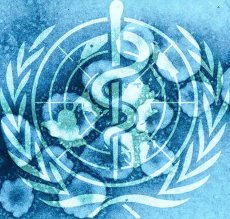The World Health Organisation has issued a notification highlighting a novel virus which comes from the same family as the SARS virus, however it is too early to tell the determine the public health implications of the discovery.
 The report from the WHO came after a man suffering acute repository syndrome and renal failure was flown from Qatar to the UK.
The report from the WHO came after a man suffering acute repository syndrome and renal failure was flown from Qatar to the UK.
The Health Protection Agency of the UK (HPA) conducted laboratory testing and has confirmed the presence of a novel coronavirus. The sequence of the virus was almost identical to a similar case identified earlier this year.
Coronaviruses are a large family of viruses which includes viruses that cause the common cold and SARS.
Additional information from the HPA includes a press release, a Q&A and background for healthcare workers.
UPDATED: Our colleagues at the UKSMC collected the following expert commentary. Feel free to use these quotes in your reporting. If you would like to contact a New Zealand expert, please contact the SMC (04 499 5476; smc@sciencemediacentre.co.nz).
Prof Massimo Palmarini, Director of the MRC/University of Glasgow Centre for Virology Research, said:
“At the moment there is not enough information to determine whether this new virus represents a public health problem. From the evidence currently available, it seems that this virus, whilst lethal to some individuals, is not causing a major outbreak of disease.
“It is important to remember that even viruses which are apparently lethal in some individuals cannot necessarily be easily transmitted between people or give rise to a serious disease outbreak. For many viruses, individuals with underlying health problems may be at greater risk of experiencing more serious illness whilst the majority of healthy individuals will experience only mild symptoms.
“There are also examples of viruses that “jump species” by being transmitted from animals to humans but this is often where it stops because the virus cannot then be transmitted further between humans. For example, some individuals in East Asia were infected, and in some cases were even killed, by the H5N1 strain of avian influenza virus. Avian H5N1 was only transmitted to people who had long periods of exposure to infected chickens. The virus was able to cause disease in these infected humans. However, because the virus was really not adapted to humans, it was not able to spread efficiently from human to human.”
Prof Andrew Easton, Virologist at the School of Life Sciences, University of Warwick, said:
“This is clearly a new virus but with only two cases we can say little about the potential threat. The important thing is to be aware of the virus and to be on the lookout for any evidence that it is more than a rare chance event.
“This may be a virus which only rarely causes disease and has been identified now because monitoring and subsequent screening techniques are much more sophisticated now than in the past. If that is the situation we may see no, or very few, further cases. However the identification of the virus will most likely lead to closer scrutiny of past and future cases so we will rapidly be able to formulate views on the potential threat that the virus may pose.”
In response to some specific questions:
“At this point it is a case of watching carefully and waiting as more data accumulates. In the meantime there is a lot of speculation and it is not possible to give definitive answers to every question at this time.”
How worried should we be?
“There have been two reported of infection with this virus, one in July and one in September. At this stage it is not possible to accurately predict the risk. Given that this is a respiratory infection and there have only been two cases over several months it is not likely to represent a serious threat. However, it is important to be watchful and to monitor for any future cases to obtain a better understanding of the true risk.”
How do you think this disease is passed on?
“The best guess is that this is transmitted in the same way as influenza virus. i.e. by coughing and sneezing. However, given that there have only been two cases it is not likely to be easily transmissible.”
What will healthcare workers be doing to reduce transmission?
“The healthcare workers will be taking all reasonable precautions at this stage. Good hygiene (washing hands etc.) will certainly be employed.”
Professor John Oxford, Professor of Virology at Queen Mary, University of London, said:
“First of all, my congratulations to the scientists involved for identifying a new Coronavirus. I feel somewhat relaxed because this is more likely to join numerous other members of the Coronavirus family and behave like a nasty infection rather than join the ‘exception’ group like SARS.
“SARS was very quick off the mark infecting hospital staff etc. and this new virus does not to me appear to be in the same ‘big bang’ group. I am very pleased that it does not! Incidentally, there are plenty more respiratory viruses to be discovered and they come in at 1 per year.”
Prof Peter Openshaw , Director of the Centre for Respiratory Infection at Imperial College London, said:
“For now, we need to be watchful: any evidence of human to human transmission causing severe disease would be very worrying and would raise the spectre of a new SARS-like outbreak. The hope for now is that these cases are just highly unusual presentations of a generally mild infection, and that viral surveillance and detection is now so good that we are picking up cases that would not have been found in previous times.